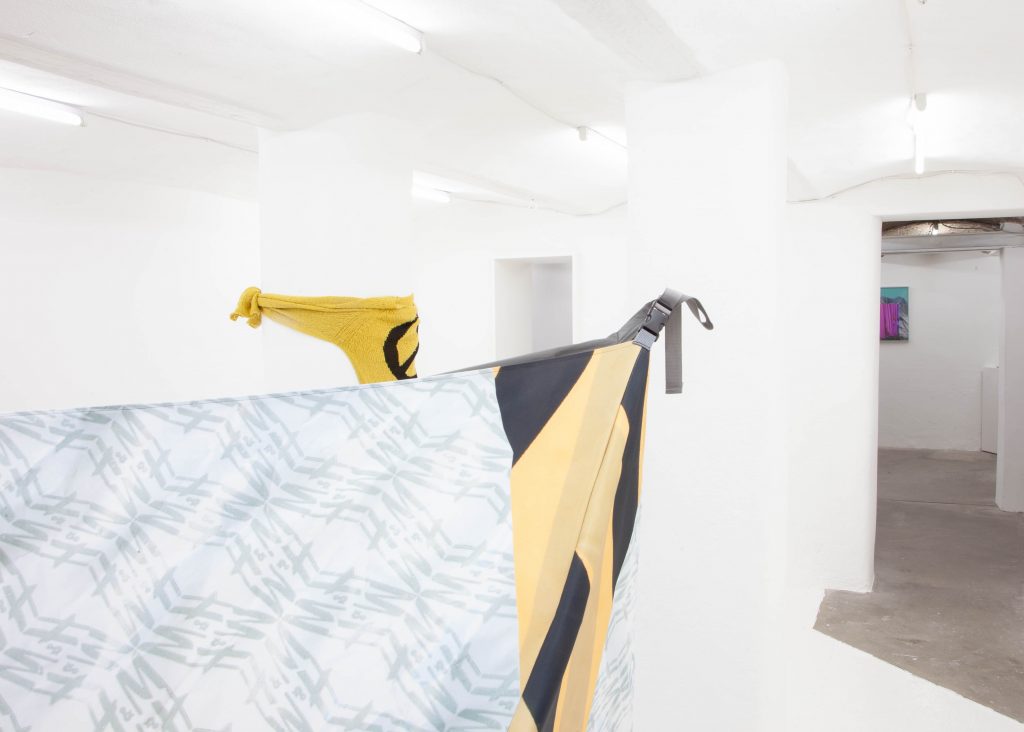Soul Camp
2015, Heit Berlin
The gallery is hidden a few meters under the ground, in a small cellar of a tenement house in Berlin. A small neon above the entrance lets you know that you found the right address. Heit. You press the bell, the doors open. Then you need to take a few steps through a corridor, walk down the stairs and open the first door on your right-hand side. There you find another corridor whose whiteness nearly blinds you. Now it is only a couple of steps more. Finally, you reach Soul Camp.
A note infused with the New Age introduces you to the exhibition. Use your imagine and feel yourself, it reads. Open to the world and fill up with positive energy. You will regenerate every cell of your being. Everything is fine. You fall in love with yourself. You are safe. Here, you can be yourself, you will start to feel the magic, the text repeats. Immediately, your attention is directed to the tents. The camp looks like a storm have just passed over it, and its power has thrown the works around the exhibition space. One of the tents stopped on the wall, the other stands behind another wall. The last one seems like it was pushed through narrow doors by otherworldly energy. There is a part of the photo on one of the pillars depicting a frail pail of stones. The cairn stays intact with its peak surmounted by a fluttering flag made of a sweater with a big peace sign on it. The disturbing silence reigns in the room. Mile stones marks a barely detectable path. Strangely familiar photographs and prints fill the track. The tents are covered with collages showing parts of bikini bodies with a sea in the background. The next one is plastered with black and gold rhombuses and a pattern made from grey and red letters. A little bit further you find fragments of various clothing companies logos. You see a next logo and a next slogan: I AM, which vaguely appears somewhere in between bigger „I” and smaller „WE”. You have the feeling that you had already seen all of that cutouts before. There are also two prints hanging on the opposite walls. They depict mountain peaks covered with similar image samples. But under them you may still catch a glimpse of rocks and trees. The dreamy image from the introductory text may quickly vanish into thin air. The note as well as nearly everything on display are actually descriptions or depictions of imaginations. The text is a copywriter’s bait luring into phantasmic Soul Camp, a place from your youth to which you would like to get back. The scene in which the exhibition has been embedded, is curtained off by scans of chain stores plastic bags. A marriage of images which are meant to make consumers more beautiful, fancy, elegant, comfortable, etc., and bring closer to the real themselves. However, the exhibition does not seek to provide a final ascertainment, an unambiguous attitude, or an explicit narration. Even though it seems to problematize the subject of consumerism, it is still more of a game with its aesthetics and excessiveness. The project captures images, materials, and slogans on the same principle as they seize the view of what is visible; creating a completely accidental stream of experiences, motifs, and narrations. Therefore, the presentation of Carolin Seeliger is a clear statement of the gallery. Heit is the password which sets the course for the gallery program. In common use, -heit as a German suffix allows to transform a concrete idea into an abstract one. When it comes to this exhibition, it is an emphasis on real and possible relationships between objects, images, and contents. It is a creation of a situation where the truth as well as the falsehood of what is possible to see and experience stand on an equal footing and boast the same creative potential. Mariusz Urban translation: Marek Wołyński
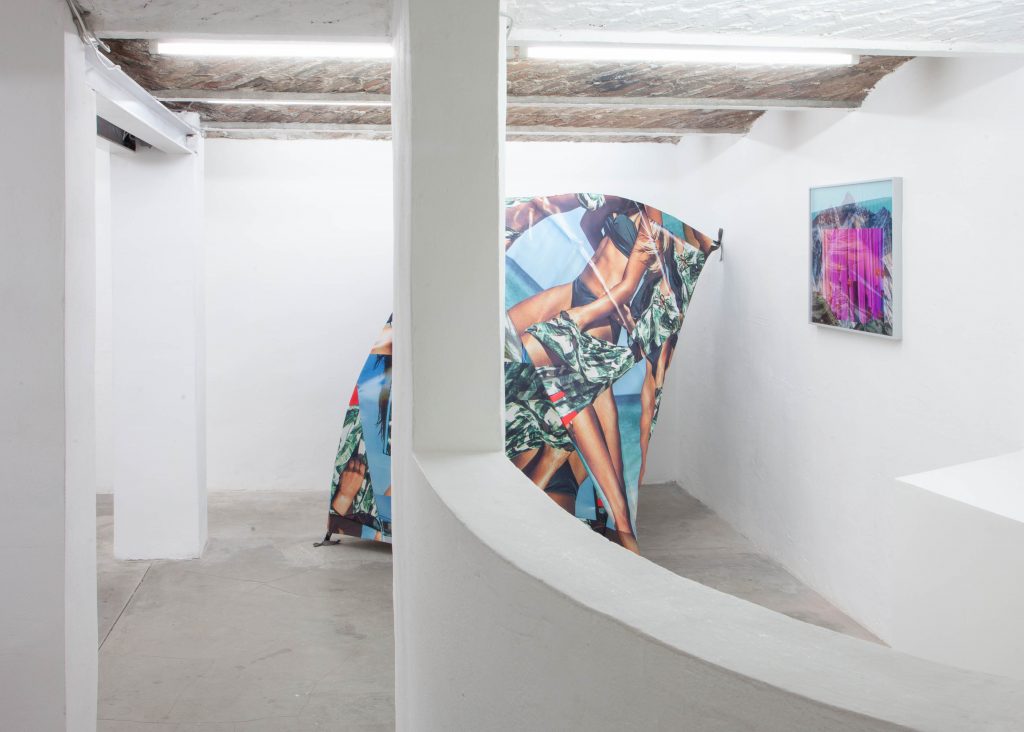
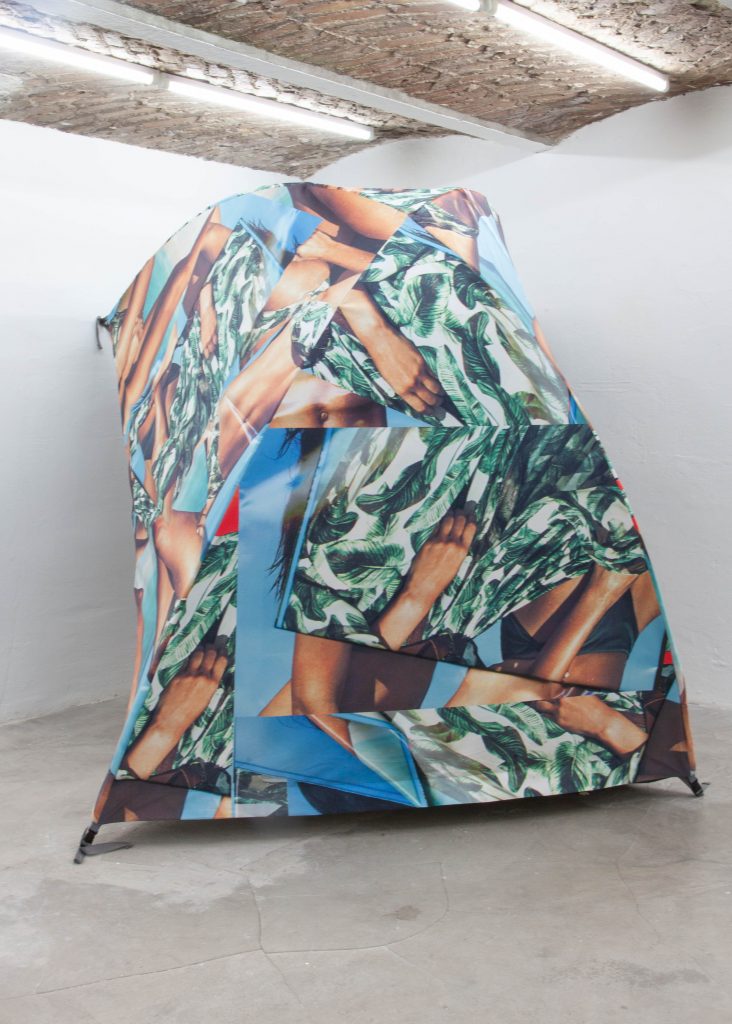
camp I 170 x 225 x 120 cm tent, print on fabric 2015
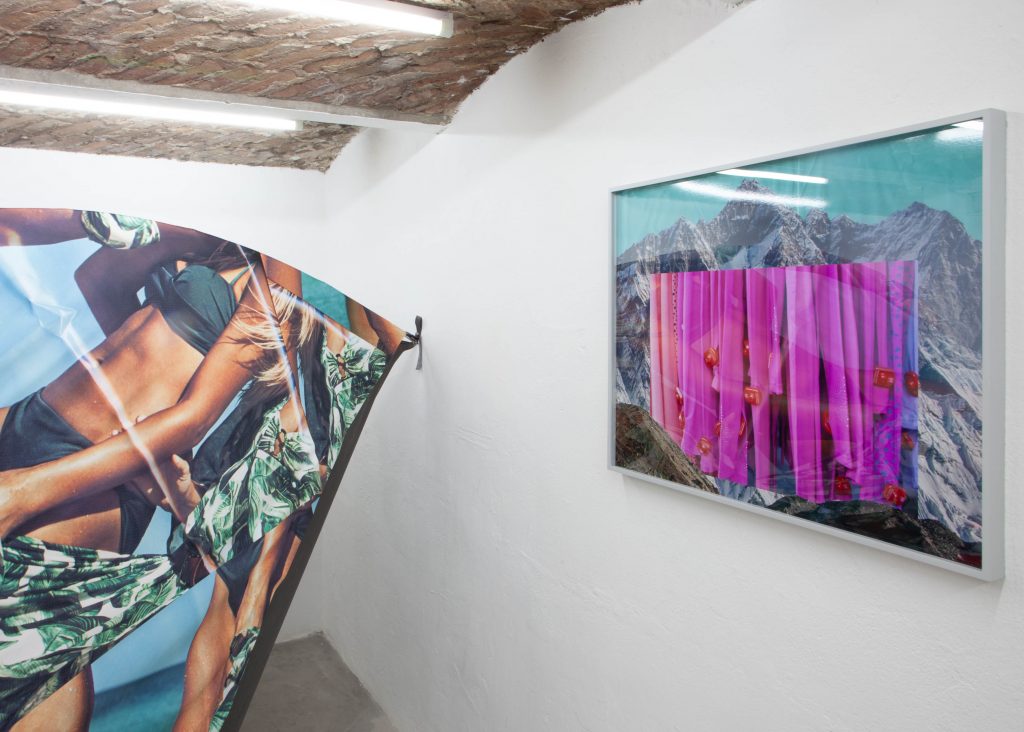
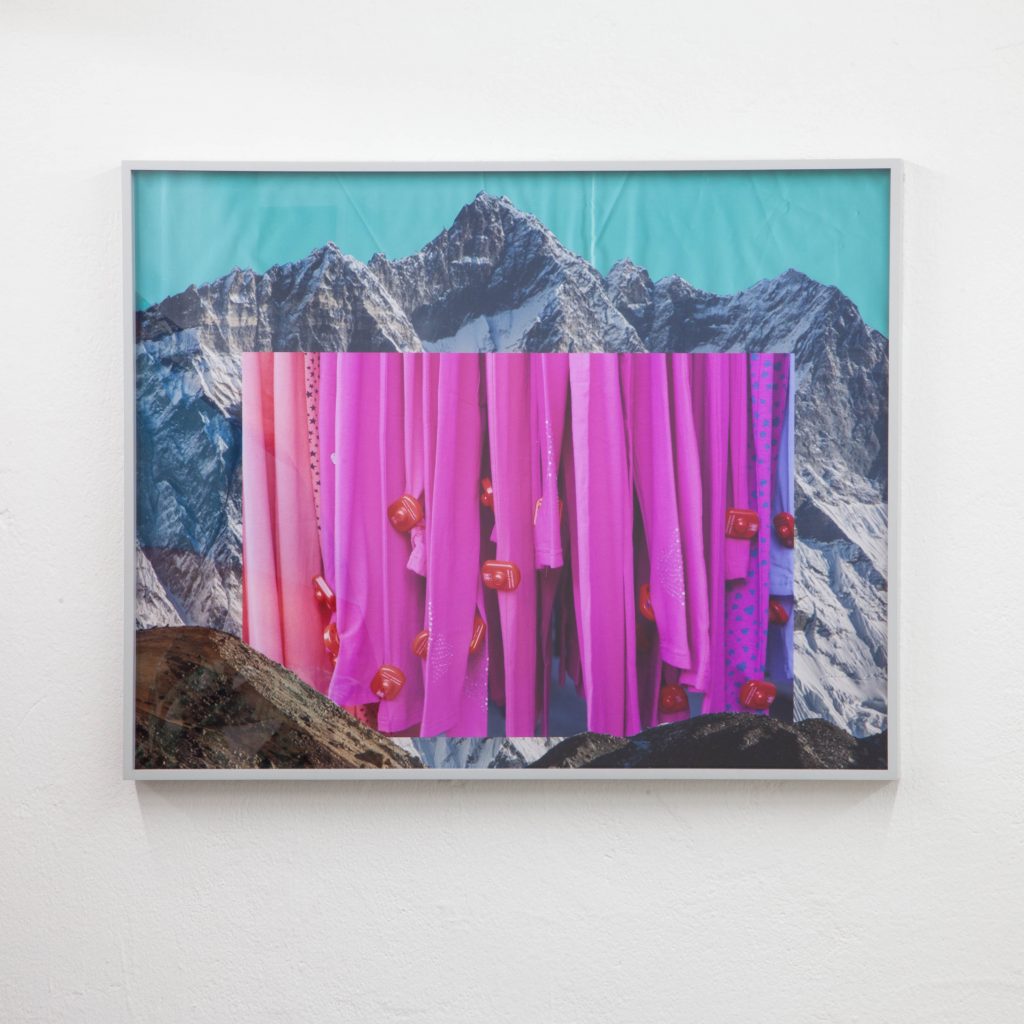
Lhotse 55 x 80 cm digital c-print 2015
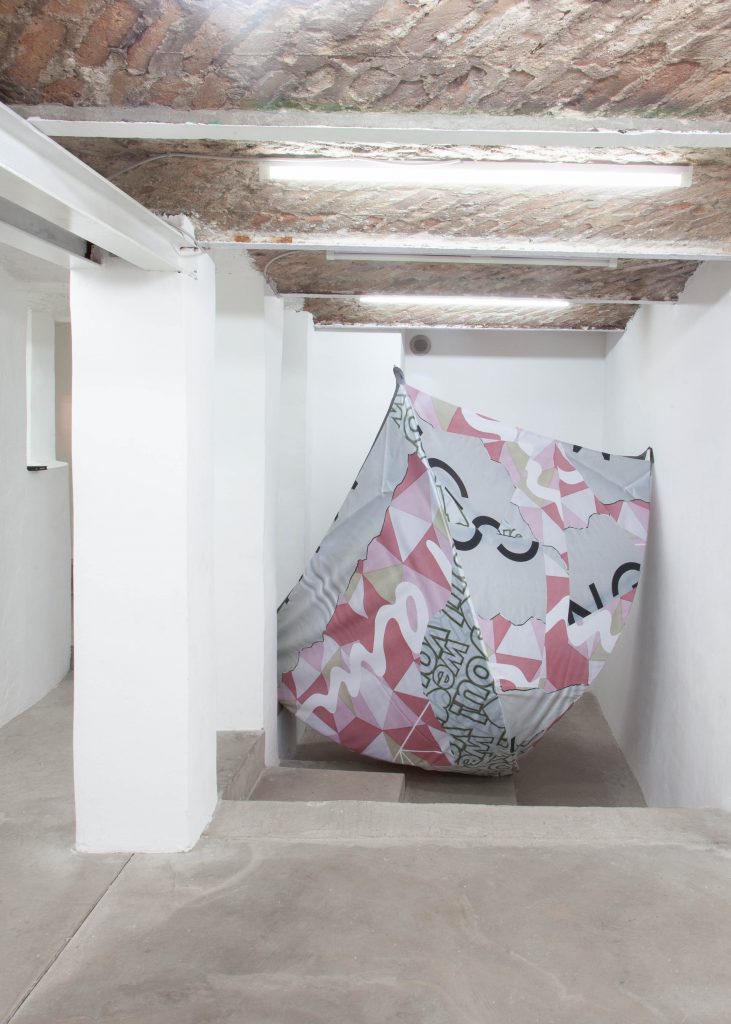
camp II 170 x 225 x 120 cm tent, print on fabric 2015
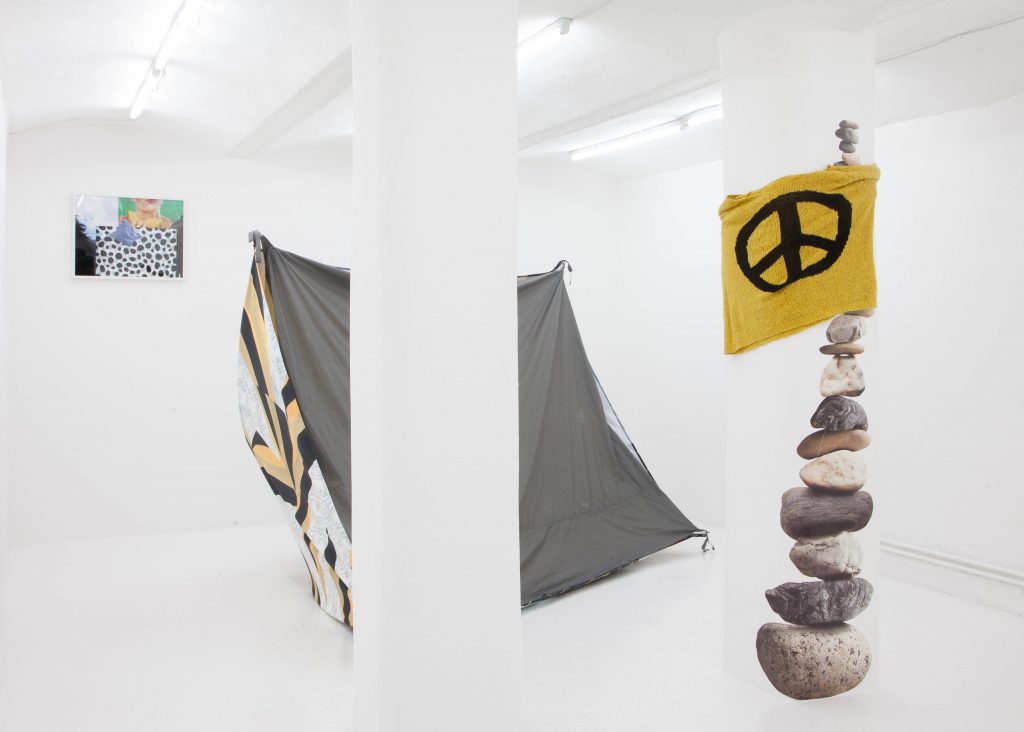
peace 185 x 47 cm wall sticker, handknit sweater
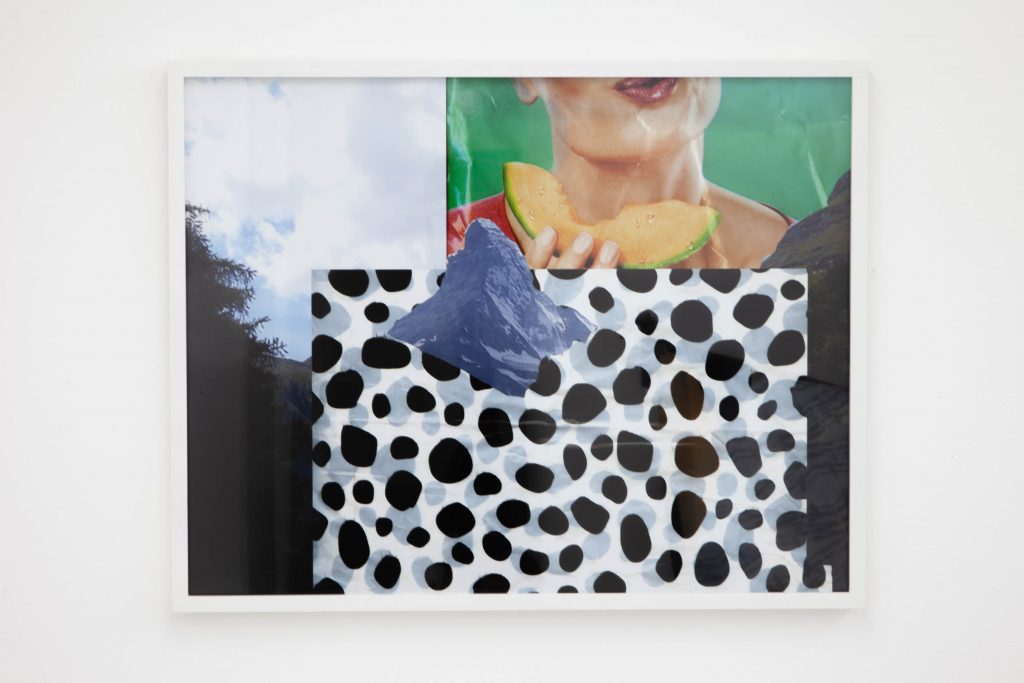
Matterhorn 43 x 54 cm digital c-print 2015
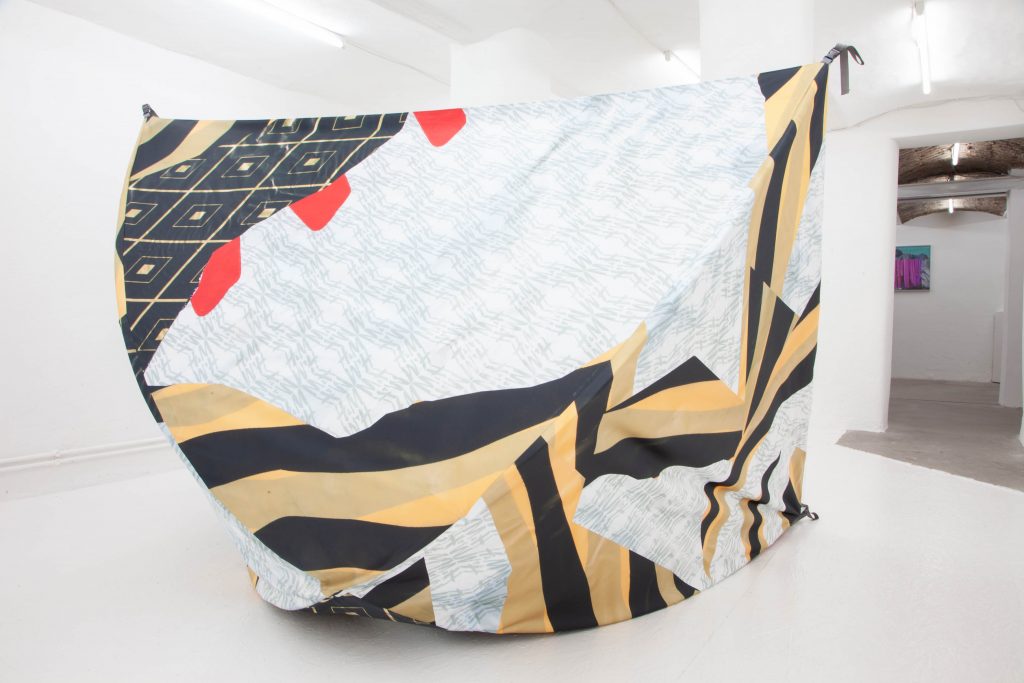
camp III 170 x 225 x 120 tent, print on fabric 2015
